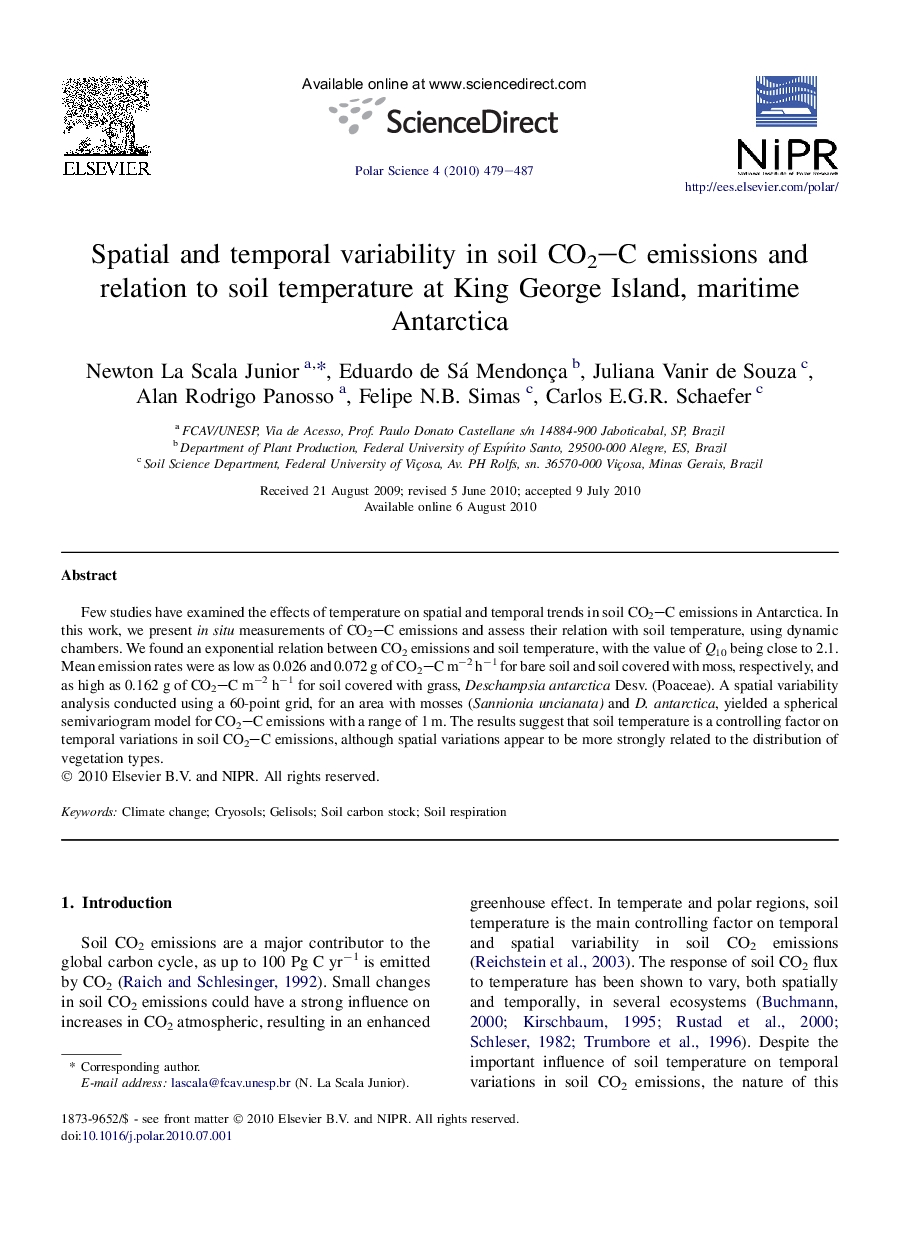| Article ID | Journal | Published Year | Pages | File Type |
|---|---|---|---|---|
| 4683413 | Polar Science | 2010 | 9 Pages |
Few studies have examined the effects of temperature on spatial and temporal trends in soil CO2–C emissions in Antarctica. In this work, we present in situ measurements of CO2–C emissions and assess their relation with soil temperature, using dynamic chambers. We found an exponential relation between CO2 emissions and soil temperature, with the value of Q10 being close to 2.1. Mean emission rates were as low as 0.026 and 0.072 g of CO2–C m−2 h−1 for bare soil and soil covered with moss, respectively, and as high as 0.162 g of CO2–C m−2 h−1 for soil covered with grass, Deschampsia antarctica Desv. (Poaceae). A spatial variability analysis conducted using a 60-point grid, for an area with mosses (Sannionia uncianata) and D. antarctica, yielded a spherical semivariogram model for CO2–C emissions with a range of 1 m. The results suggest that soil temperature is a controlling factor on temporal variations in soil CO2–C emissions, although spatial variations appear to be more strongly related to the distribution of vegetation types.
